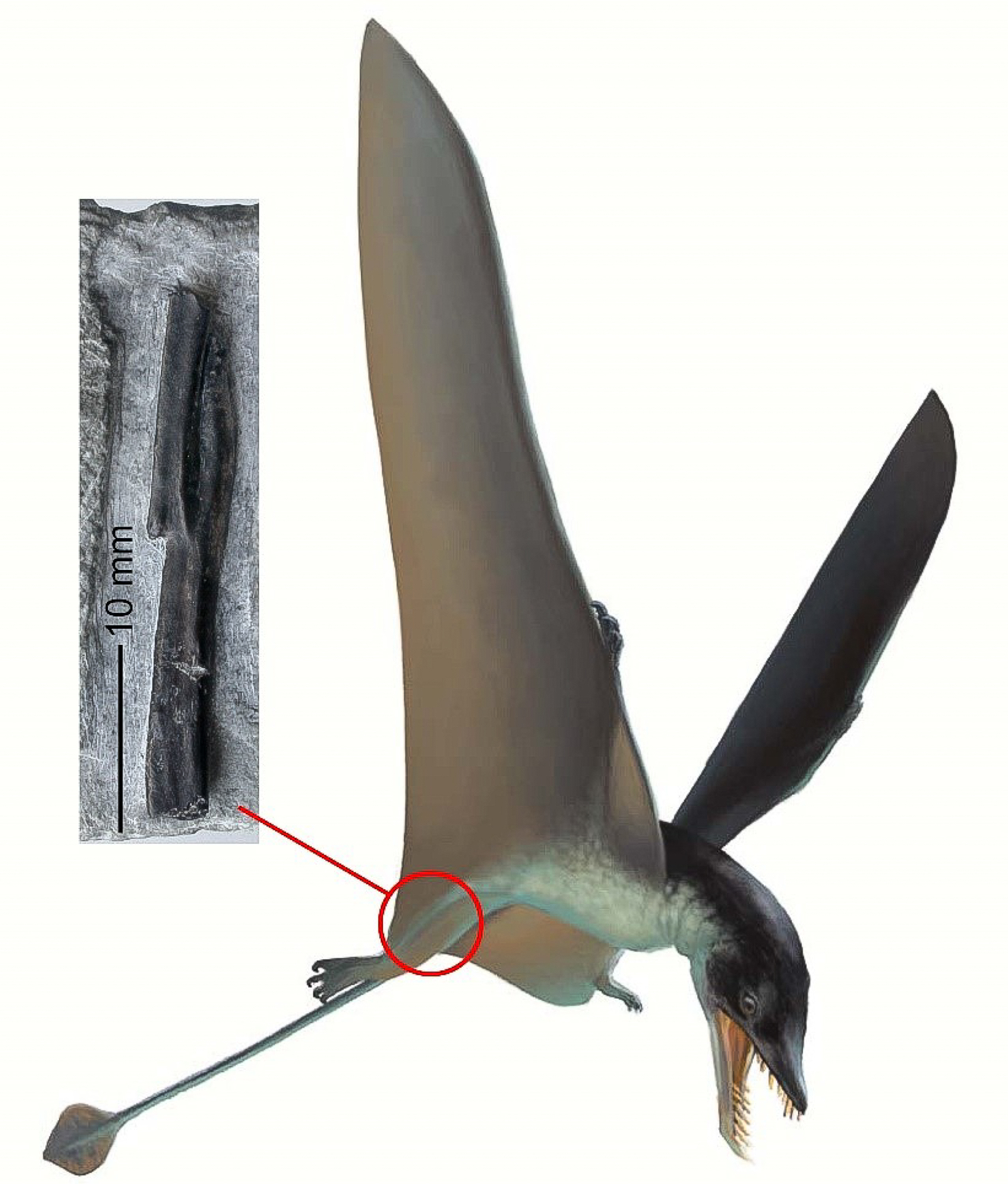It was found in an abandoned clay pit in the Grimmen suburb of Klein Lehmhagen. While collecting there in 2022, Greifswald geologist Jörg Ansorge came across a tiny fragment of an elongated, thin bone that, splits in the middle into two branches which run almost parallel to each other. The only 27 millimetre-long fragment was prepared by taxidermy. Together with Marco Schade from the University of Greifswald, Jörge Ansorge first examined the new fossil with a microscope and a high-resolution computer tomograph, before scientifically documenting the results.
The results show that the bone cortex was very thin and that the bone appeared to contain cavities. These findings, in addition to the shape, suggest that those are the fused tibia and fibula of a small pterosaur. Indeed, we know of a group of small Jurassic predatory pterosaurs with wingspans of approx. 1.5 metres, long tails, a body weight of just a few kilogrammes and strikingly toothed beaks: the rhamphorhynchoids. These pterosaurs likely fed on relatively small prey, such as insects and fish, and lived from the Early to Late Jurassic epochs. Their fossilised remains have been found in Central and North America as well as Asia and Europe. The new fossil could thus be among the oldest specimens of this group of dinosaurs.
The first fossils were found in the Klein Lehmhagen clay pit near Grimmen in the 1960s, but the pit was still in commercial use up until the 1990s. The University of Greifswald’s dinosaur, Emausaurus ernsti, was found there too. Over the decades, numerous ammonites (cephalopods from the class that also includes octopuses and squid), fish and marine reptiles, as well as insects and dinosaur remains have emerged from the pit. Nowadays, the claypan, which was likely lifted as a huge sediment package from below ground by glaciers and transported a few kilometres, is mainly inaccessible. Experienced researchers and collectors still keep making interesting finds nevertheless.
The new fossil is slightly younger than Emausaurus ernsti and came from a layer in which no other land-dwelling vertebrates had previously been found. The clay pit’s Jurassic rocks and their fossilised contents are around 180 million years old and thus date from a time of drastic environmental change, during which many living beings went through a process of evolutionary diversification, including the dinosaurs. Split or fused bones also show up in other vertebrates, such as the lower and upper legs of frogs and some mammals, rib sections of early turtles, marine reptiles and birds. However, in view of the evolutionary history of some of these groups, the site’s depositional environment and the results of the investigation, Marco Schade and Jörg Ansorge assume that it is more likely this is part of the remains of a pterosaur. It is possible that the animal’s carcass ended up on the surface of the sea where it decomposed, its remains depositing on the sea floor. If the fossil really is part of the remains of a rhamphorhynchoid, it would be among the world’s oldest specimens of these animals as well as the first pterosaur fossil to be found in Mecklenburg-Vorpommern.
Further information
Publication: Schade, M., Ansorge, J. Enigmatic fragment possibly marks the first pterosaur record from the Lower Toarcian of Grimmen, NE Germany. PalZ (2024). https://doi.org/10.1007/s12542-024-00698-6
Geological Collections of the Institute of Geography and Geology [de]
Contact at the University of Greifswald
Dr. Marco Schade
Zoological Institute and Museum
Cytology and Evolutionary Biology
Soldmannstraße 23, 17489 Greifswald
marco.schadeuni-greifswaldde

